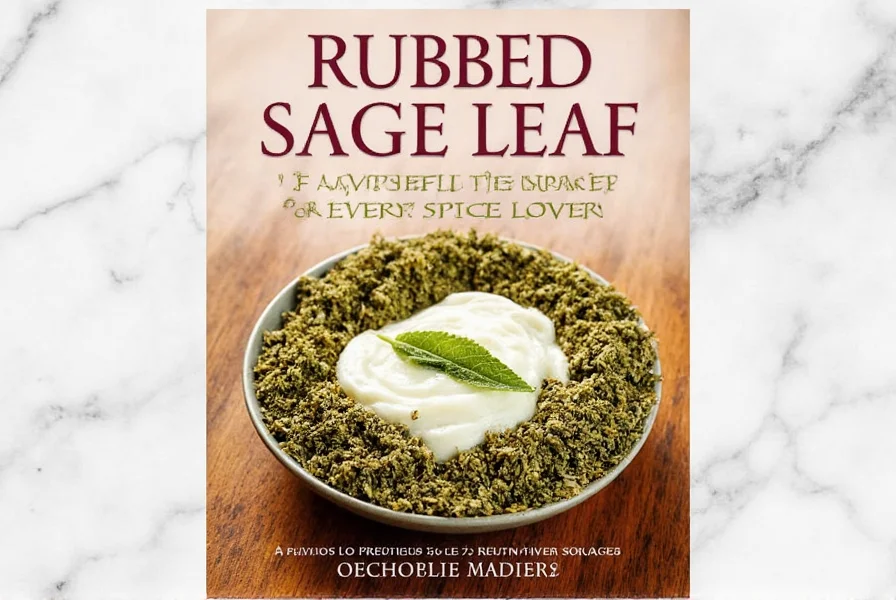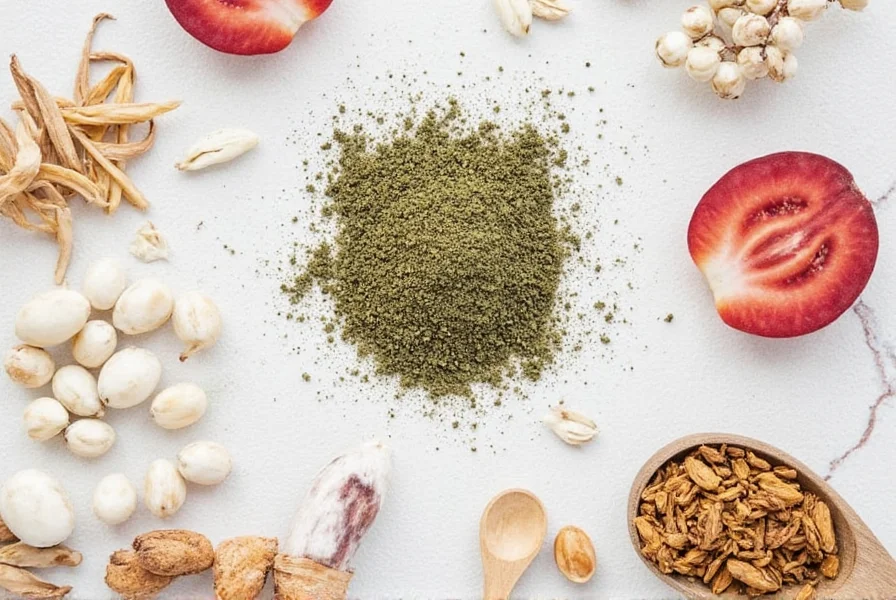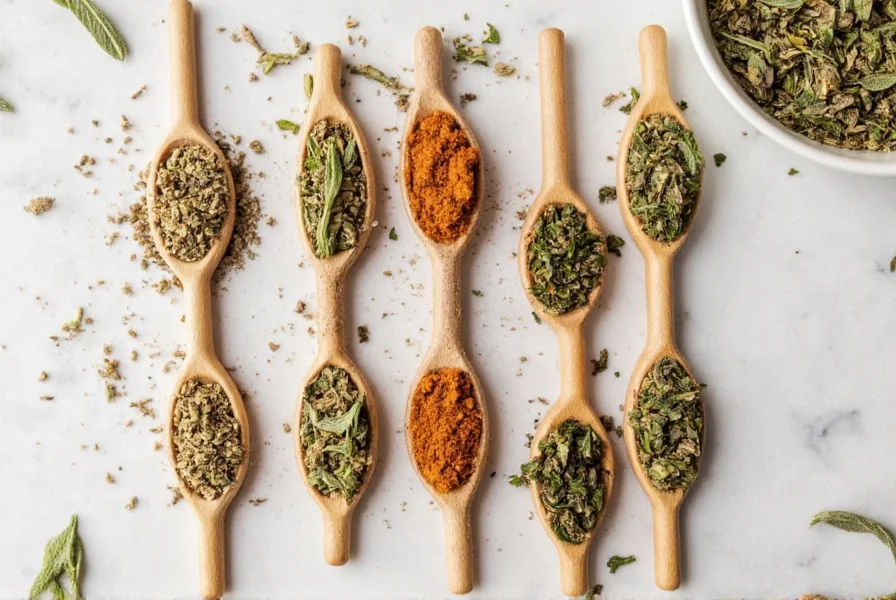Rubbed sage leaf is a preparation of dried sage leaves where the leaves are rubbed between your fingers to break them into small, fragrant pieces. This process releases the herb's essential oils, making it more flavorful than whole dried sage leaves. Unlike ground sage, which is finely powdered, rubbed sage retains a textured consistency while delivering concentrated earthy and peppery notes. It's commonly used to season meats, soups, and baked goods, adding depth without overpowering other ingredients.
The Flavor Profile of Rubbed Sage Leaf
Rubbed sage leaf offers a complex aroma with subtle bitterness that balances rich dishes. Its strong, woody scent combines pine-like freshness with grounding earthiness, making it ideal for fatty meats like pork or duck. When used sparingly, it enhances flavors without dominating the dish.
| Flavor Notes | Description |
|---|---|
| Earthy | Rich, grounding notes that add depth to savory dishes. |
| Peppery | A slight heat that enhances the overall flavor profile. |
| Herbal | Notes of mint and pine that give it a fresh, green quality. |
| Bitter | A natural bitterness that complements rich or fatty foods. |

Practical Tips for Using Rubbed Sage Leaf
Follow these expert techniques to maximize rubbed sage's potential:
- Start Small: Rubbed sage is highly concentrated. Begin with 1/8 teaspoon per serving and adjust gradually to avoid bitterness.
- Use as a Finisher: Add toward the end of cooking to preserve delicate aromas.
- Pair with Fatty Meats: Its bitterness cuts through richness in pork, duck, or lamb. Sprinkle on roasted meats before serving.
- Mix with Complementary Herbs: Combine with thyme, rosemary, or oregano for complex rubs or marinades.
- Experiment in Baked Goods: Add a pinch to herb breads or cheese scones for savory depth.

Store properly in an airtight container away from light and moisture. According to the USDA Food Safety and Inspection Service, this preserves freshness for up to a year.
Cooking Examples with Rubbed Sage Leaf
Roasted Pork with Rubbed Sage
This dish highlights rubbed sage's earthy and peppery qualities. The herb balances pork's richness while adding aromatic depth.

Sage-Infused Butter
Melted butter infused with rubbed sage enhances vegetables, bread, or seafood. Simply mix into softened butter for quick flavor elevation.
Herb-Rubbed Chicken
Toss chicken breasts with rubbed sage, garlic, olive oil, and salt. Roast until golden for a simple, flavorful meal.
Buying Guide for Rubbed Sage Leaf
1. Source and Quality
Look for reputable brands sourcing from trusted farms. High-quality rubbed sage should have vibrant green color and a strong, fresh aroma. Avoid dull or musty-smelling products, as they indicate poor storage or age.
2. Form and Packaging
Choose airtight containers or vacuum-sealed packages to prevent oxidation. Glass jars with tight seals are ideal for long-term freshness.
3. Price and Value
Compare price per gram and shelf life. Premium brands often offer better quality retention, though affordable options from trusted retailers can be equally effective.
4. Use Cases and Target Audience
Ideal for home cooks and chefs seeking to elevate everyday dishes. Perfect for holiday roasts, soups, or creative baking experiments.
5. Suitable Occasions
Especially valuable during festive seasons like Thanksgiving or Christmas for meat dishes. Also enhances weeknight meals with minimal effort.
Frequently Asked Questions
What's the secret to using rubbed sage without overpowering dishes?
Rub the sage between your fingers before adding to release oils gradually. Start with 1/8 teaspoon per serving and wait 5 minutes before adding more. This prevents bitterness while allowing earthy notes to meld with other ingredients.
Can rubbed sage replace fresh sage in recipes?
Yes, but use one-third the amount of rubbed sage compared to fresh. For example, 1 teaspoon rubbed sage equals 3 teaspoons fresh leaves. Rehydrate by mixing with 1/2 teaspoon warm water before incorporating for best results.
What unexpected dish benefits from rubbed sage?
Citrus desserts! A pinch (1/16 teaspoon) enhances lemon or orange curds by balancing sweetness with earthy depth. Professional chefs use this in panna cotta and fruit tarts for sophisticated flavor bridges.
How can I extend rubbed sage's shelf life beyond a year?
Store in an amber glass jar with oxygen absorber packets, then freeze. This preserves volatile oils for up to 18 months. Remove only needed amounts and return immediately to prevent condensation.
What's the perfect wine pairing for sage-seasoned dishes?
Medium-bodied Italian reds like Montepulciano d'Abruzzo balance sage's bitterness with tart cherry notes. For whites, oaked Vermentino mirrors sage's pine-like herbal finish beautifully.
Conclusion
Rubbed sage leaf is a versatile herb that elevates dishes with its earthy, peppery depth. By understanding its proper use and storage, you can transform ordinary meals into exceptional culinary experiences. Always start with small amounts and experiment to find your perfect balance.










 浙公网安备
33010002000092号
浙公网安备
33010002000092号 浙B2-20120091-4
浙B2-20120091-4